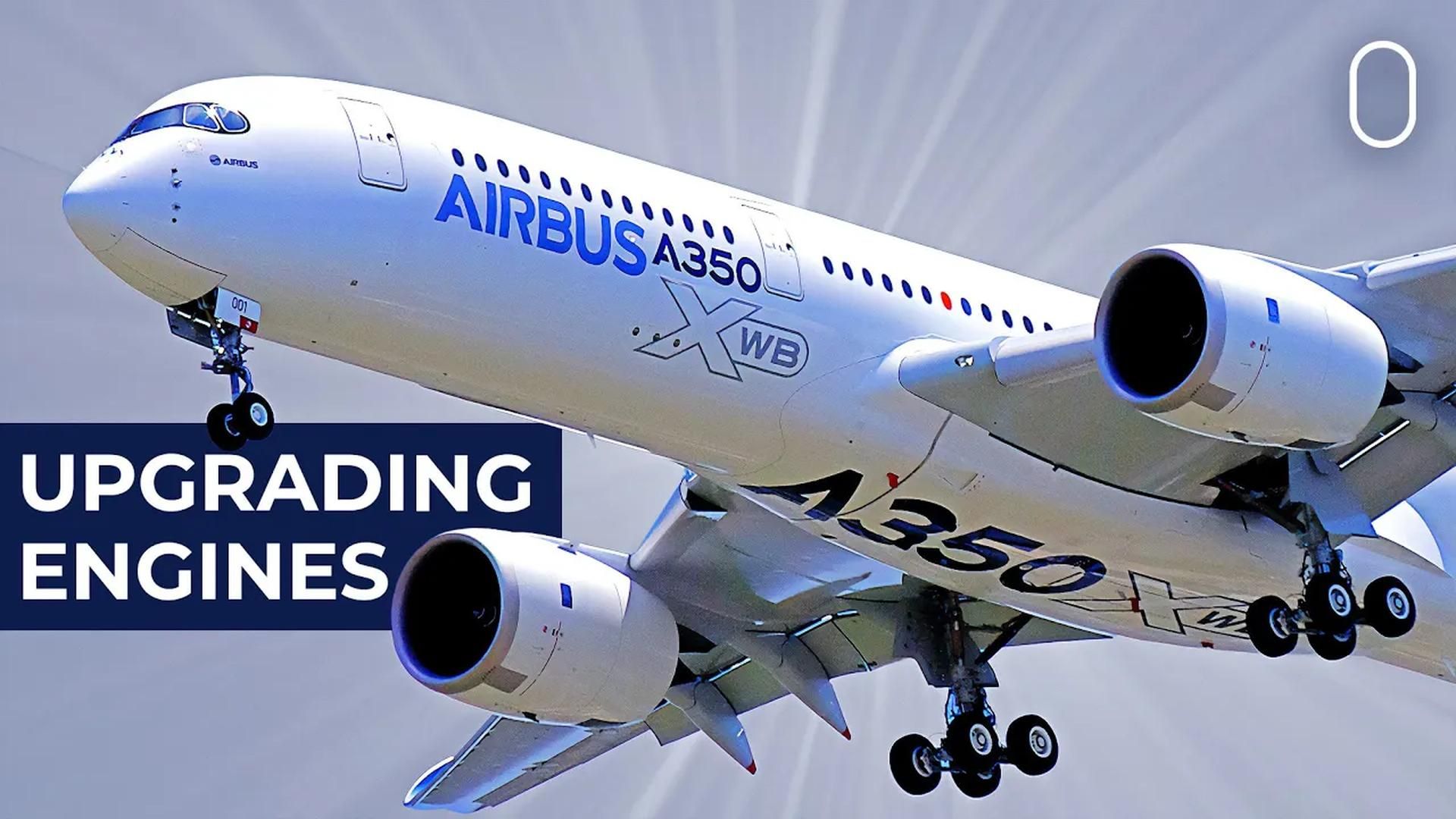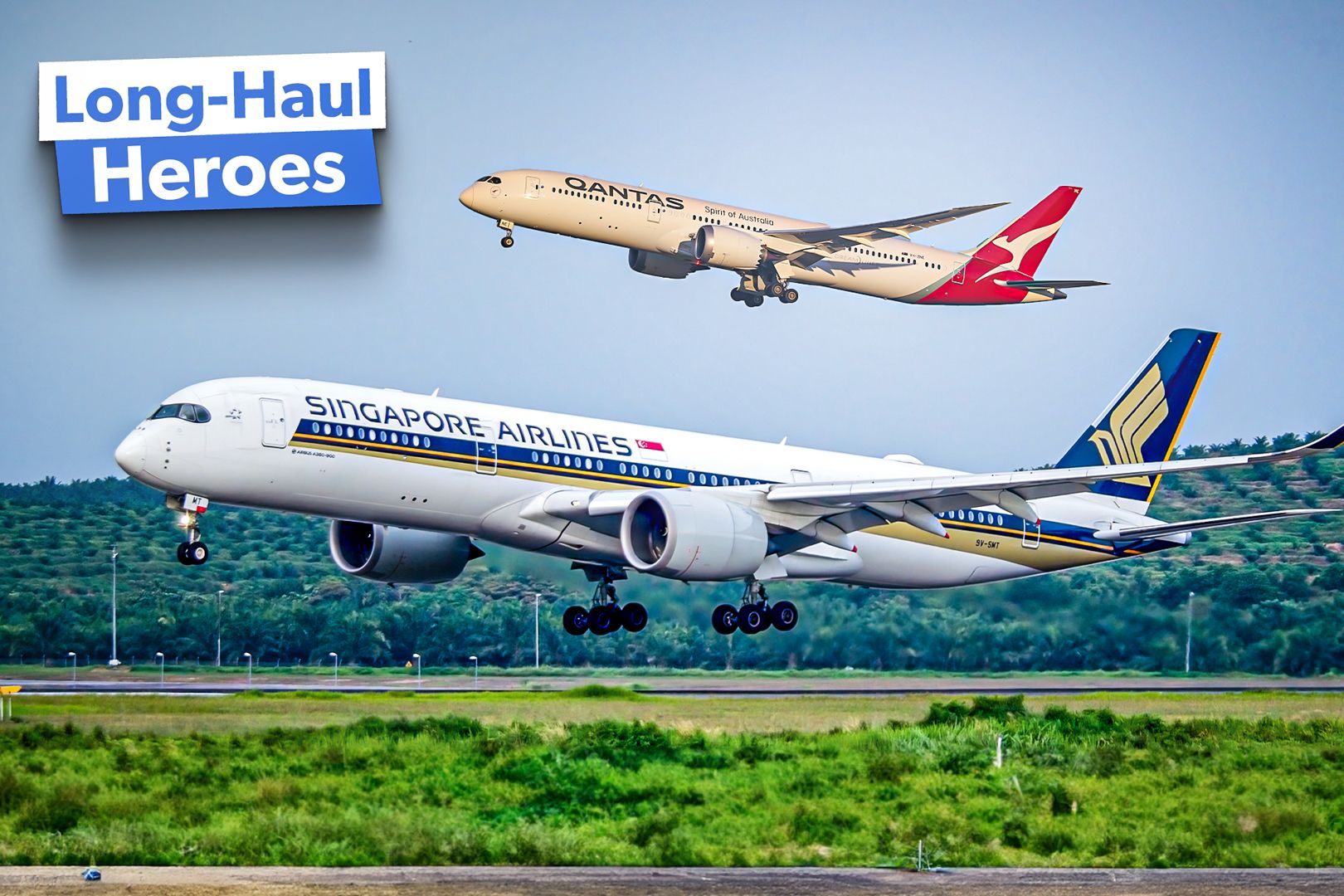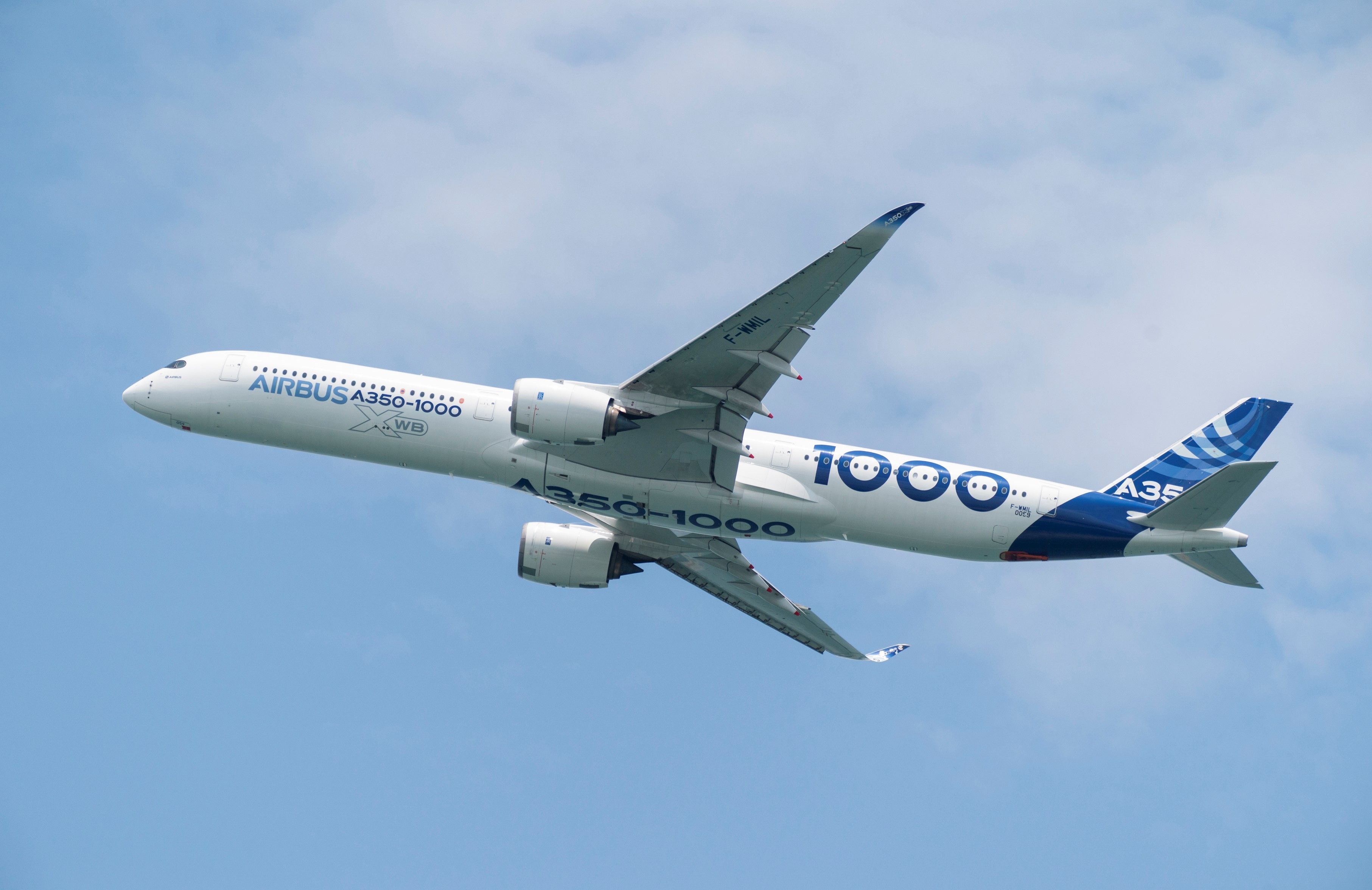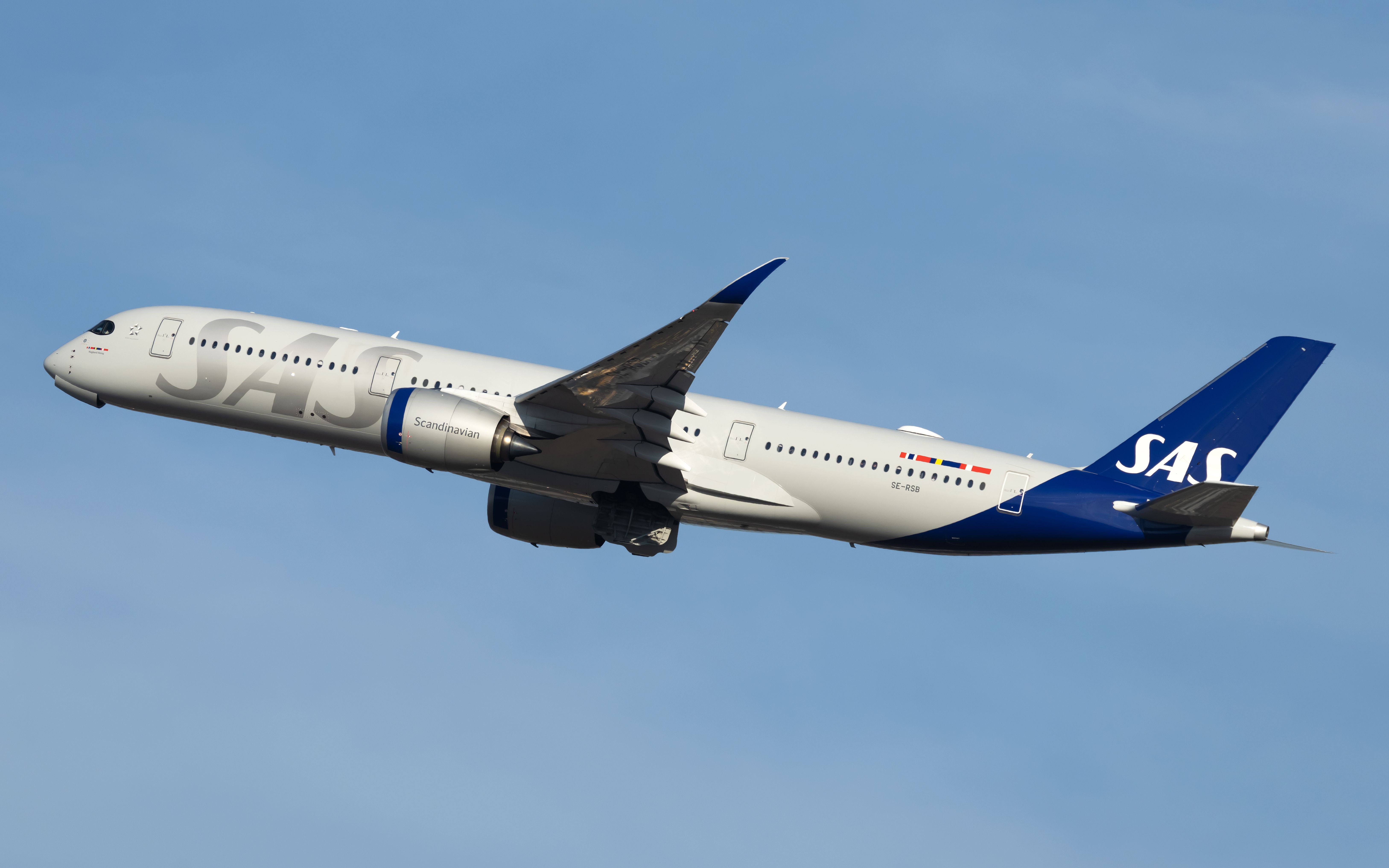Summary
- The Airbus A350 has two variants: -900 (315 seats) and -1000 (369 seats), which compete with Boeing models.
- Airbus is considering a further stretch of the A350-1000 to compete with the 420-seat Boeing 777X.
- The potential stretch of the A350-1000 would offer better economics with lower trip and seat-mile costs than competitors.
This year marks 11 years since the Airbus A350 took to the skies for the first time. As stated by Airbus, with over 600 active examples across all variants and 40 operators worldwide, the A350 is making its mark in commercial aviation. Depending on the variant, the airliner competes with the Boeing 777 and 787 Dreamliner. In its early days in service, Airbus floated the idea of a further stretched version of the A350-1000.
|
Airbus A350 |
As of July 31, 2024 |
|---|---|
|
Total orders |
1327 |
|
Total deliveries |
613 |
|
Aircraft in operation |
612 |
Existing A350 variants
The Airbus A350 is a long-range widebody aircraft with two variants, the -900 and the -1000. The -900 (and -900 ULR) has a fuselage length of 219 ft (67 m), a seating capacity of 315 passengers in a two-class configuration, and a Maximum Takeoff Weight (MTOW) of 280 tonnes.
|
Model |
A350-900/-900ULR |
A350-1000 |
|
|---|---|---|---|
|
Typical seating |
315 (48J+267Y) |
369 (54J+315Y) |
|
|
Main deck max. |
440 seats |
480 seats |
|
|
Lower deck cargo |
36 LD3 or 11 pallets |
44 LD3 or 14 pallets |
|
|
Overall length |
66.8 m (219.2 ft) |
73.79 m (242.1 ft) |
|
|
Wing |
64.75 m (212.43 ft) span, 31.9° sweep |
||
|
Wing area |
442 m2 (4,760 sq ft) |
464.3 m2 (4,998 sq ft) |
|
|
Overall height |
17.05 m (55 ft 11 in) |
17.08 m (56 ft 0 in) |
|
|
Fuselage |
5.96 m (19.6 ft) width, 6.09 m (19.98 ft) height |
||
|
Cabin width |
5.61 m (18 ft 5 in) with 18-inch-wide (46 cm), 9-abreast seating 5.71 m (18 ft 9 in) with 16.8-inch-wide (43 cm), 10-abreast seating |
||
|
MTOW |
283 t (623,908 lb) ULR: 280 t (620,000 lb) |
322 t (710,000 lb) |
|
|
Max. payload |
53.3 t (118,000 lb) 45.9–56.4 t (101,300–124,300 lb) |
67.3 t (148,000 lb) |
|
|
Fuel capacity |
140.8 m3 (37,200 US gal) 110.5 t (244,000 lb) ULR: 170 m3 (44,000 US gal) |
158.8 m3 (42,000 US gal) 124.65 t (274,800 lb) |
|
|
Engines (2×) |
Rolls-Royce Trent XWB |
||
|
Max. thrust (2x) |
84,200 lbf (374.5 kN) |
97,000 lbf (431.5 kN) |
|
|
Cruise speed |
Mach 0.85 (488 kn; 903 km/h; 561 mph) typical Mach 0.89 (513 kn; 950 km/h; 591 mph) max. |
||
|
Range |
8,300 NM (15,372 km; 9,600 mi) ULR: 9,700 NM (17,964 km; 11,163 mi) |
8,900 NM (16,500 km; 10,200 mi) |
|
|
Service ceiling |
43,100 ft (13,100 m) |
41,450 ft (12,630 m) |
|
The -1000 has a fuselage length of 242 ft (74 m), a seating capacity of 369 passengers in a two-class configuration, and an MTOW of 320 tonnes. A further stretch of the -1000 means competing head-to-head with the 420-seater Boeing 777X (yet to enter commercial service). The critical question for Airbus is how large the twin-engine 400+ passenger market is and whether the Boeing 777X already caters to the need.
3:59

Related
Airbus A350 Enhancement: Upgraded Rolls-Royce Trent XWB-84 To Enter Service Next Year
Beginning next year, newly produced A350-900s will be equipped with upgraded Rolls-Royce Trent XWB-84 engines.
Viability for a further stretch
- Length stretch: Approximately 25 ft.
- Capacity increase: Up to 40 passengers
- More than 40 passengers: a need for a new pair of emergency exits
- MTOW increase: Approximately 20 tons
With more than ten years of experience with the airliner, Airbus would aim to build the stretched version with minimal changes to the design. If Airbus stretches the fuselage to fit another 35–40 passengers, it can be done without having another (fifth) pair of emergency exit doors.
Photo: Airbus
The Boeing 777-300ER, having slightly greater capacity, uses five pairs of emergency exit doors. That, by design, not only takes away floor space but also increases empty weight. With the existing four pairs of doors, the -1000 can be stretched around four meters, increasing the capacity by 40 seats. With much better economics, the stretched variant with 409 seats can compete directly with the Boeing 777 and 777X.
The stretch will add nearly 12 tonnes to its MTOW, still over 20 tonnes less than the Boeing 777X. With a modest increase in the empty weight and the MTOW, the wing loading will marginally increase. Therefore, the A350-1000 wing would not require any design changes. The stretched A350 will be more fuel-efficient due to its weight and better seat-per-mile costs.
Photo: Vincenzo Pace I Simple Flying
With minor changes to thrust configuration, the existing Rolls-Royce Trent XWB engines can power the stretched A350 variant. The added weight of approximately 12 tonnes and a fuselage length of 4 meters will require an additional 3,000 lbf (3.1%) of thrust from existing engines. The Trent XWB 97 (97,000 lbf) can be modified to provide extra thrust for the stretched variant.
Better economics
Based on the rough analysis, the Airbus A350-1000 stretched variant certainly seems viable for Airbus. By staying within the emergency exit door limits and minimal changes to the empty weight and MTOW, the potential stretch would have around 10% lower trip costs and around 5% lower seat-mile costs than its competitors.
As Airbus has not ruled out the possibility of a future stretch of its flagship airliner, a concrete plan from the European manufacturer can challenge Boeing’s dominance in the large twin-engine segment.

Related
Why Do The Airbus A350 & Boeing 787 Dominate The World’s Longest Routes & Which Flies Where?
Intercontinental travel is gaining momentum again after the pandemic. The Boeing 787 and the Airbus A350 have resumed their rivalry.


